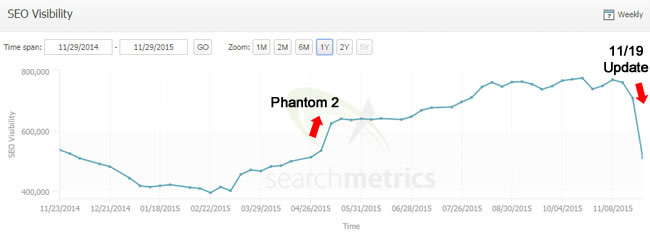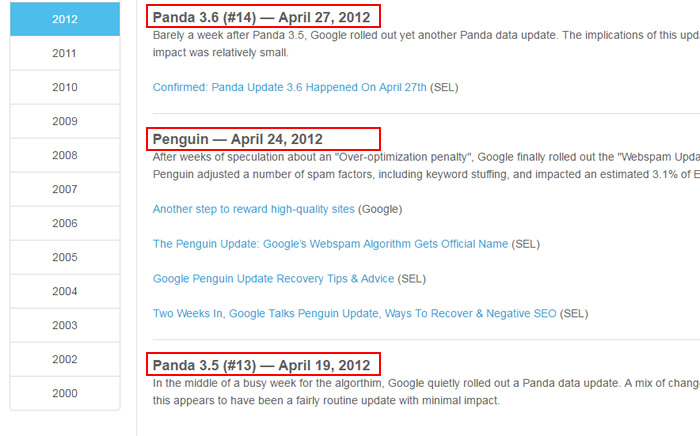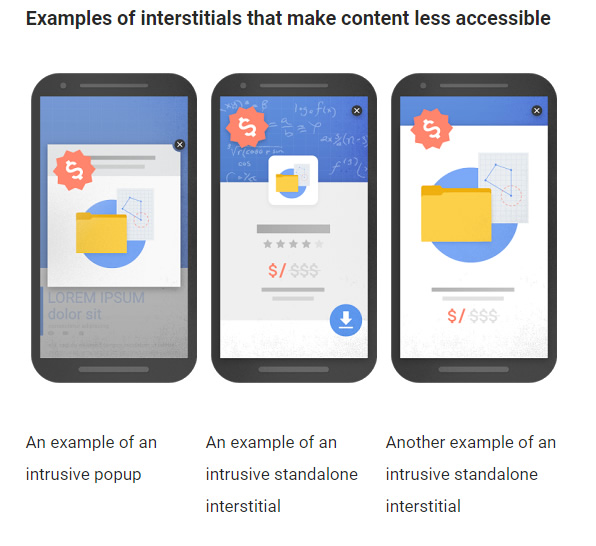Glenn Gabe has been a contributor to Search Engine Journal and also frequently breaks the news on the latest Google algorithm changes and updates. For the first time, Glenn is speaking at our SEJ Summit conference series. We are so excited to have such a talented SEO sharing the stage with the rest of our great speakers. Below, I asked Glenn a little more about what he’s covering at SEJ Summit NYC in November 2nd, 2016.

Your SEJ Summit presentation is titled: What the Doctor Ordered: Your Yearly Google Algorithm Update Checkup (2016 Edition). In your opinion, what was the biggest update SEOs should be paying attention to this year?
Based on its frequency and level of impact, I believe Google’s quality updates (AKA Phantom) are incredibly important to pay attention to. And we’ve seen several quality updates in 2016.
As a quick reminder, the first quality update rolled out in May of 2015 and impacted many sites globally. Google finally confirmed that they did roll out an update and explained that it was a change to its core ranking algorithm with how it assessed “quality”. And with Google always trying to surface the highest quality and most relevant content for users, that’s an incredibly important statement.
Since May of 2015, we’ve seen six significant quality updates (and three in 2016 so far). The updates are global and industry-agnostic (I’ve seen many different types of sites impacted by Phantom). And websites seeing impact during a quality update can absolutely see the impact by subsequent updates (either reversing course, surging more, or declining further). That’s why I believe SEOs and business owners should be keenly aware of Phantom, and its history. Here are my posts about the November and June quality updates. Both were significant.
For example, here are two sites surging and dropping during the November 2015 update, and both saw impact during Phantom 2 as well (in May of 2015):


Let’s talk about Phantom. Part of what makes this update so elusive is that Google plays the ‘neither confirm nor deny’ game. What do SEOs most need to know about this update? Should we be worried?
You’re right; Google will typically not confirm changes to its core ranking algorithm. That said, they did confirm the first quality update, and then confirmed “core ranking algorithm changes” during certain subsequent updates.
But when major algorithm updates roll out, you can start to see a connection with previous updates. For example, sites impacted by a new update that also saw impact during previous quality updates. That’s when you can start to understand if the update was indeed Phantom.
Here is an excellent example of a site seeing impact across several quality updates. You can clearly see the connection between them:

But to make matters even tougher for SEOs, Google can absolutely retire Phantom at any point. They can also push it to real-time at some point. And if they do either, then we’ll have no idea that happened and may never see another immediate drop or spike like in the past (with Phantom anyway).
On that note, Panda is now part of Google’s core ranking algorithm. It’s not real-time yet, but continually rolls out slowly across the web. Therefore, we’ll never see another old-school Panda update (with significant movement all on one day). And I believe Google likes it that way. No drama, no media attention, no subsequent analysis, etc.
Moz is reporting an “unnamed update” in just the last week or two. (September 2016). What are your thoughts on their report?
Yes, there was another big update starting on August 31, 2016. But I don’t believe we saw just one update. I believe we saw three (two roll out and one being tested).
The first was spotted by Joy Hawkins and it was a local algorithm update. That rolled out about the same time as a core ranking algorithm update (which I believe was another quality update). Many of the sites impacted by the core ranking algo change (that rolled out after the local update) had been previously impacted by other quality updates. And then about a week later I saw sites that had previous link problems (and Penguin problems) spike. Others saw that too, like Marie Haynes.
So Google could have been testing Penguin 4 (or another link-based algorithm). And now that we know Penguin 4.0 rolled out, which Google announced on September 23, that third movement we saw very well could have been Penguin 4 being tested in the wild.
Needless to say, it’s always tricky when Google rolls out multiple algorithm updates at one time, or across a short period. And yes, Google can and will roll out multiple updates simultaneously. My favorite example was the algorithm sandwich in April of 2012. That’s when Google rolled out Panda, then Penguin 1.0, and then Panda again all within a ten-day period. It was crazy.

What strategies do you recommend for long-term Google algo update protection? I hear a lot of “just write good content, and you will always be safe!” That isn’t particularly actionable. Is there anything else brands can or should be doing?
I think it’s critically important for business owners to know their sites inside and out. That’s from a technical standpoint and a content standpoint (including advertising). That means continually crawling, auditing, evaluating, and refining the site. That’s the only way to ensure that quality problems don’t creep in.
Also, technical problems could cause quality problems as well. For example, canonicalization problems, robots.txt issues, mobile problems, render problems, etc. can all impact SEO. If you are on top of the situation, then you can quickly rectify any issues that pop up. But if you’re not aware of them, then the problems will keep building until you get blindsided. And I’ve received many calls from business owners who have been blindsided by algorithm updates in the past.
So, auditing content that gets published, educating writers, editors, and others that are in control of publishing content, crawling and auditing a site over time, reviewing links on a regular basis to ensure something funny isn’t going on, and then nipping any problems in the bud to ensure they don’t become bigger and scarier problems. That’s how you can protect your site from getting dinged during future algorithm updates.
Looking forward, what is the #1 thing SEOs need to be thinking about as we move toward 2017?
With so many changes and new things going on in SEO, it’s really hard to pick the number one area to focus on. That said, I’ll quickly cover two areas that webmasters need to be aware of.
First, if Google keeps rolling out quality updates (Phantom), then webmasters should be keenly aware of those updates and the quality of their own sites. I covered this earlier, and it’s extremely important. We’ve seen quality updates roll out every few months, and the last was early September. So we will probably see another at the beginning of 2017 (just like last year). So keep your eye on Phantom. It’s certainly keeping its eye on you. 🙂
Next, and to state the obvious, mobile is booming. I have some clients with 80%+ mobile traffic. So staring at the beautiful desktop experience you are providing may not mean very much. I would make sure your mobile experience is as strong as possible. Google has a mobile-friendly algorithm, and it plans to incorporate mobile speed into the equation at some point. So I would start taking a hard look at how mobile users experience your website, how fast those pages load, if there are obstacles, etc.
Also, accelerated mobile pages (AMP) started rolling out to the core mobile SERPs on 9/20. I think AMP should be an area that business owners take a hard look at, since amplified pages load near-instantaneously for mobile users and Google is pushing AMP hard. I’m not saying every site should jump on the AMP bandwagon, but business owners should evaluate its performance, how it works for users, how it impacts conversion, revenue, etc.
And then there’s the mobile popup algorithm that’s rolling out in January of 2017. Many sites will be impacted by that, and some probably have no idea it’s coming. If a site is presenting popups or interstitials on the first page from the search results, then those pages could be demoted in the mobile search results. And popups and interstitials are used so heavily now by publishers that the algorithm will definitely impact many pages across the web.

Therefore, I highly recommend that sites evaluate their use of popups and interstitials, make the necessary changes well ahead of January 1, 2017, and then be ready for the algo to roll out. One thing is for sure, it should be interesting.
Great advice. Thanks for answering my questions, Glenn. See you in NYC!
Don’t forget; you can still buy tickets and come learn more from speakers like Glenn in NYC Nov. 2nd at the TimesCenter in Manhattan.
Image Credits
Featured Image: alexey_boldin/DepositPhotos.com
SEJ Summit In-post Photo: Image by Paulo Bobita
Screenshots taken by Glenn Gabe Sept 2016


